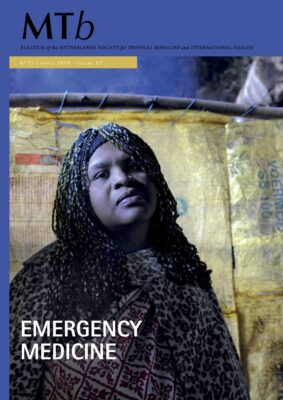
Emergency Medicine
Editorial
We are so familiar with health emergencies; when someone suffers from cardiac arrest, diabetic coma, acute abdomen, a calamity in pregnancy or trauma, we call 112 or 911 (whatever applies in our area) and an ambulance with skilled staff is on its way to the scene and should arrive within a specified time to provide first aid. Resuscitation may have already been started by bystanders who have been trained in cardiac massage in publicly available courses. Skilled staff awaits the patient at the emergency department and major life-saving interventions can be done immediately with further care in an intensive care unit if needed. Not so in most low- and middle-income settings. Bystander response or any form of emergency service such as ambulance transport or hospital-based facilities is absent in many places. However, this is slowly changing. In 2018, the WHO launched the Global Emergency and Trauma Care Initiative to provide a structured framework to address this issue. In Africa, there is now an African Federation for Emergency Care (AFEM) that has produced the Oxford Handbook of Acute and Emergency Care with protocols for all common conditions. In Malawi, the adult trauma and emergency centre at Queen Elizabeth Central Hospital in Blantyre has transformed emergency care dramatically based on triage and a well-defined patient approach. In the same hospital, a paediatric intensive care unit was successfully established, boosting health care for children in general and offering specialized care for those who need it. Patients with burns form a special category, and the emergency management faces many challenges in which cultural beliefs, poor infrastructure, poor training and lack of specialized care play a role with a direct negative effect on outcome. For the medical staff, working in such an environment is challenging; one must quickly become used to taking on a lot of responsibility. A (junior) expat doctor may have to perform emergency operations particularly on trauma patients that he would never have been allowed to do in countries like the Netherlands, with little if any supervision. Emergency Medicine (EM) has developed into an increasingly recognized speciality with improved access to specific training for all staff and the availability of protocol-based management. Designated emergency units and intensive care units have been established. EM has been integrated into the medical curricula, and medical and nursing staff do rotations in the Emergency Department. The impact of EM cannot be overemphasized: besides saving lives, it reduces the burden of inappropriate admissions to the wards and reduces overcrowding and overburdening of nursing and medical staff, which in turn benefits all admitted patients. And last but not least, increased awareness, better staff training, and improved infrastructure in overall health facilities result in better care and a more rational referral pattern. It is gratifying to see yet another important component of the medical spectrum coming of age.
Ed Zijlstra
Josephine van de Maat
References
- Global Emergency and Trauma Care Initiative
Geneva: WHO; 2018




















































